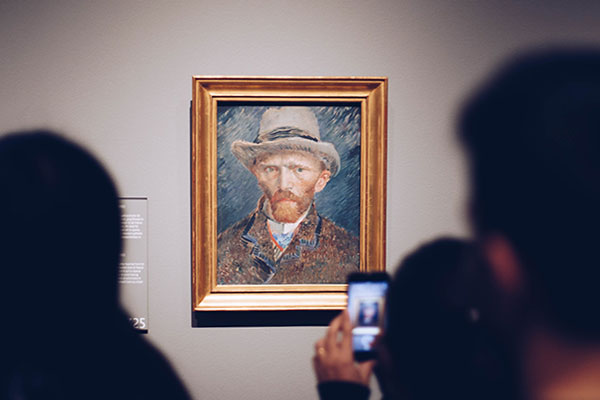🌟 Chapter : The Mauryan Empire 🌟
The Mauryan Empire, one of the largest and most powerful empires in Indian history, played a pivotal role in shaping the political, social, and cultural landscape of ancient India. Founded by Chandragupta Maurya in 321 BCE, the Mauryan dynasty established a strong centralized state, ensuring stability across vast territories and fostering trade, culture, and the spread of religion. The empire reached its zenith under Ashoka, one of India’s greatest rulers.
🏛️ The Rise of the Mauryan Empire 🏛️
- Founder – Chandragupta Maurya:
- Chandragupta Maurya established the Mauryan Empire after overthrowing the Nanda dynasty in 321 BCE with the help of his mentor Chanakya (also known as Kautilya), a brilliant strategist and author of the Arthashastra (a treatise on statecraft and economics).
- Initially, Chandragupta ruled in Pataliputra (modern-day Patna), the capital of the empire, which became the political hub of ancient India.
- The Nanda Dynasty’s Overthrow:
- The Nanda Dynasty had left a strong political and military legacy, but it was marked by internal discontent and external threats. Chandragupta, with Chanakya’s guidance, successfully overthrew the Nandas and established his rule.
🌍 Expansion of the Mauryan Empire 🌍
- Chandragupta’s Conquests:
- Chandragupta expanded the empire through military conquest. By 305 BCE, he had gained control of Magadha, North-Western India, and parts of Afghanistan and Baluchistan.
- The most significant military achievement was his defeat of Seleucus I Nicator, one of Alexander the Great’s successors. The peace treaty with Seleucus resulted in the exchange of territories and a diplomatic alliance, further expanding the Mauryan Empire.
- The Influence of Chanakya:
- Chanakya’s Arthashastra laid the foundation for a centralized and well-administered state. It emphasized strong control over finances, military strategy, and diplomacy, influencing governance for centuries.
🌍 The Empire Under Bindusara and Ashoka 🌍
- Bindusara (Reign: 298 BCE – 272 BCE):
- Bindusara, the son of Chandragupta, continued the expansion of the Mauryan Empire, securing the southern region of India and consolidating the empire’s power.
- He is often referred to as Amitraghata, meaning “Slayer of enemies,” due to his military prowess.
- Ashoka the Great (Reign: 268 BCE – 232 BCE):
- Ashoka is the most renowned Mauryan ruler, primarily for his transformation from a fierce, war-oriented king to a proponent of Buddhism and non-violence.
- His empire reached its zenith in terms of territorial expansion, covering almost the entire Indian subcontinent except for parts of the southern Deccan.
- Ashoka’s major victory, the Kalinga War (around 261 BCE), significantly impacted his reign. The devastating loss of life in the war led him to adopt Buddhism and embrace the principles of ahimsa (non-violence).
📜 Ashoka’s Contributions to Governance and Society 📜
- Edicts of Ashoka:
- Ashoka is best known for his Rock Edicts and Pillars of Ashoka, inscribed on stones and pillars throughout his empire. These edicts conveyed his policies on justice, ethics, tolerance, and the welfare of his people.
- His inscriptions, written in Prakrit (the language of the people), advocated for the spread of Buddhism and the promotion of moral and ethical behavior across society.
- Ashoka’s Dhamma: Ashoka implemented the concept of Dhamma (moral law) that aimed at promoting kindness, tolerance, and fairness. His policies were aimed at the well-being of his subjects, advocating for animal rights, the welfare of the elderly, and harmony among different religions.
- Support for Buddhism:
- Ashoka’s patronage played a crucial role in the spread of Buddhism beyond India, even reaching Sri Lanka, Southeast Asia, and Central Asia.
- He organized the Third Buddhist Council in Pataliputra, bringing together monks to discuss and preserve the teachings of Buddha.
- His reign is considered a golden age for Buddhism, with Ashoka establishing Buddhist monasteries and promoting the Sangha (Buddhist community).
- Social Reforms:
- Ashoka’s administration emphasized social welfare, including efforts to improve infrastructure like roads, hospitals, and rest houses.
- He enacted laws aimed at maintaining social harmony, such as prohibiting animal sacrifices and promoting plant-based diets in some regions.
- Ashoka’s rule brought about religious tolerance, where people of different faiths, including Hinduism, Jainism, and Buddhism, coexisted peacefully under his leadership.
🏛️ Decline of the Mauryan Empire 🏛️
- Weak Successors:
- After Ashoka’s death, the Mauryan Empire began to weaken. His successors, unlike him, were not as capable or as strong in governance, leading to a decline in central control.
- The empire faced internal revolts, external invasions, and the erosion of political cohesion. The empire eventually fragmented, with the southern and western regions breaking away.
- End of the Mauryan Empire:
- In 185 BCE, the last Mauryan ruler, Brihadratha, was assassinated by his general Pushyamitra Shunga, who then founded the Shunga Dynasty, marking the end of the Mauryan Empire.
🏺 Mauryan Economy, Art, and Culture 🏺
- Mauryan Economy:
- The Mauryan Empire had a highly organized economy with a strong agrarian base. There was a well-maintained system of trade, with silk, spices, cotton, and precious stones being traded.
- Ashoka’s reign saw the flourishing of urbanization and the construction of public infrastructure, including roads, rest houses, and hospitals. The Mauryan administration collected taxes and maintained a highly efficient bureaucracy.
- Art and Architecture:
- Mauryan art and architecture reached new heights under Ashoka. He built Stupas, pillars, and rock inscriptions, many of which still stand as historical marvels.
- The Sanchi Stupa and the Pillars of Ashoka are remarkable examples of Mauryan art and architecture.
- The Mauryan sculptures were distinct for their realism and focus on expressing the human form.
🌍 Key Takeaways 🌍
- Chandragupta Maurya’s Foundation: The Mauryan Empire was founded by Chandragupta Maurya, who, with the help of Chanakya, overthrew the Nanda dynasty and established a centralized state.
- Ashoka’s Transformation: Ashoka the Great was initially a warrior but later embraced Buddhism and non-violence after the Kalinga War, significantly shaping the empire’s policies and India’s cultural and religious landscape.
- Rock Edicts and Dhamma: Ashoka’s Rock Edicts promoted moral law (Dhamma), ethical conduct, and the welfare of the people, advocating religious tolerance and social harmony.
- Economic Prosperity: The Mauryan economy was based on agriculture and trade, with the empire’s administration focusing on infrastructure development and social welfare.
- Decline of the Empire: After Ashoka’s death, the empire faced internal instability, leading to its eventual decline and fragmentation.
Conclusion 🌱
The Mauryan Empire marked an era of great political unity, cultural flourishing, and religious transformation in Indian history. Under the visionary leadership of Chandragupta Maurya and Ashoka, the empire thrived, spreading the message of Buddhism and creating an enduring legacy in governance, art, and culture. However, after Ashoka’s death, the empire faced decline, but its impact on Indian history, especially in terms of statecraft, social welfare, and religious tolerance, remains influential to this day.


